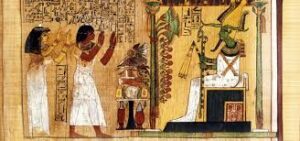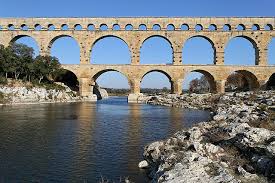The study of ancient civilizations offers a fascinating glimpse into the origins of many practices and traditions that continue to influence our lives today. From intricate religious ceremonies to innovative engineering feats, ancient cultures across the globe developed unique cultural practices that reflect their values, beliefs, and ways of life. This article explores some of the most amazing cultural practices from ancient civilizations, highlighting their significance and enduring legacy.
1. Ancient Egyptian Rituals and Beliefs

1.1. Mummification
One of the most iconic practices of ancient Egypt was mummification. This complex process involved preserving the bodies of the deceased to ensure their journey to the afterlife. Mummification was rooted in the belief that the soul required a preserved body for resurrection.
- Process: The mummification process included the removal of internal organs, which were then placed in canopic jars. The body was treated with natron (a mixture of sodium carbonate, sodium bicarbonate, and salt) to dry it out, and then wrapped in linen bandages.
- Significance: This practice reflected the Egyptians’ belief in an eternal afterlife and their desire to protect and honor the deceased. The elaborate tombs and burial artifacts found with mummies indicate the high regard in which they held their dead.
1.2. The Book of the Dead
The “Book of the Dead” was a collection of spells and prayers designed to assist the deceased in navigating the afterlife. This guide was often included in the tombs of the dead to ensure a safe passage and favorable judgment before the gods.
- Content: The text contained spells for overcoming obstacles, ensuring protection from evil forces, and achieving a favorable judgment by Osiris, the god of the underworld.
- Impact: The “Book of the Dead” illustrates the central role of religion in Egyptian life and the importance of preparing for the afterlife.
2. Ancient Greek Philosophy and Democracy
2.1. The Birth of Democracy
Ancient Greece is renowned for its contributions to the development of democracy. The city-state of Athens is credited with creating the early form of direct democracy, where citizens had the power to vote on laws and government policies.
- Athenian Democracy: Athenian democracy involved direct participation from eligible citizens, who could speak and vote on legislative issues in the Assembly. Citizens also served on juries and could be selected for various public offices by lot.
- Legacy: The principles of Athenian democracy laid the foundation for modern democratic systems and continue to influence political thought and governance today.
2.2. Philosophical Schools
Ancient Greece was also the birthplace of several influential philosophical schools, including Stoicism, Epicureanism, and Platonism.
- Stoicism: Founded by Zeno of Citium, Stoicism emphasized rationality, self-control, and the importance of living in accordance with nature. The philosophy advocated for personal virtue and wisdom as the path to true happiness.
- Epicureanism: Founded by Epicurus, this philosophy taught that the pursuit of pleasure and the avoidance of pain were the primary goals of life. Epicureans believed in simple living and sought tranquility through intellectual and physical pleasures.
- Platonism: Founded by Plato, this philosophy explored the nature of reality, knowledge, and ethics. Plato’s theory of forms and his dialogues on justice, politics, and education have had a profound impact on Western thought.
3. Ancient Chinese Innovations and Traditions

3.1. Confucianism and Filial Piety
Confucianism, founded by Confucius, is a major philosophical and ethical system that has deeply influenced Chinese culture and society.
- Core Teachings: Confucianism emphasizes the importance of familial relationships, social harmony, and moral integrity. Filial piety, or respect for one’s parents and ancestors, is a central tenet of Confucian thought.
- Impact: The principles of Confucianism have shaped social norms, governance, and family structures in China and other East Asian countries. The emphasis on education, respect, and moral behavior remains influential in modern Chinese culture.
3.2. The Great Wall of China
The Great Wall of China is one of the most impressive feats of ancient engineering. Built to protect Chinese states and empires from invasions by nomadic tribes, the wall spans over 13,000 miles and represents a monumental effort in construction and defense.
- Construction: The wall was built using various materials, including earth, wood, and stone. It was constructed over several dynasties, with significant contributions from the Qin, Han, and Ming dynasties.
- Significance: The Great Wall symbolizes China’s historical strength and resilience. It also serves as a reminder of the complex interplay between military strategy and cultural identity.
4. Ancient Maya Astronomy and Architecture
4.1. Maya Calendar and Astronomy
The ancient Maya civilization is renowned for its advanced knowledge of astronomy and their sophisticated calendar system.
- Calendar System: The Maya developed several calendar systems, including the Tzolk’in (a 260-day ritual calendar) and the Haab’ (a 365-day solar calendar). These calendars were used for agricultural, religious, and ceremonial purposes.
- Astronomical Observations: The Maya made precise astronomical observations and created detailed star maps. Their observations influenced their calendar and played a crucial role in religious and agricultural activities.
4.2. Architectural Marvels
The Maya are also known for their remarkable architectural achievements, including the construction of pyramids, temples, and observatories.
- Pyramids and Temples: The Maya built impressive structures such as the Temple of Kukulcán at Chichen Itza and the Temple of the Inscriptions at Palenque. These structures were often aligned with celestial events and served as centers for religious ceremonies.
- Observatories: The Maya constructed observatories, such as El Caracol at Chichen Itza, to track astronomical phenomena and make predictions about celestial events.
5. Ancient Indian Contributions to Science and Mathematics
5.1. Vedic Mathematics
Ancient India made significant contributions to mathematics through the development of Vedic mathematics, a system of mathematical techniques found in the Vedas.
- Techniques: Vedic mathematics includes methods for rapid calculation, algebraic manipulation, and solving equations. These techniques are based on ancient texts and provide efficient ways to perform complex calculations.
- Influence: The principles of Vedic mathematics have influenced modern mathematical practices and continue to be studied for their historical and educational value.
5.2. Ayurvedic Medicine
Ayurveda, an ancient system of medicine originating in India, is based on the principles of balance and harmony in the body.
- Principles: Ayurveda emphasizes the balance of the three doshas (Vata, Pitta, and Kapha) and the use of natural remedies, such as herbs, diet, and lifestyle changes, to promote health and well-being.
- Legacy: Ayurvedic practices have influenced modern alternative medicine and holistic health approaches. The system’s focus on personalized treatment and natural remedies remains relevant today.
6. Ancient Roman Engineering and Public Works

6.1. Roman Aqueducts
The ancient Romans are renowned for their engineering prowess, particularly in the construction of aqueducts to supply cities with fresh water.
- Design and Construction: Roman aqueducts were built using a combination of arches, gravity, and precise engineering to transport water over long distances. Notable examples include the Aqua Appia and Aqua Claudia.
- Impact: The aqueducts contributed to the growth and prosperity of Roman cities, providing a reliable water supply for drinking, sanitation, and irrigation.
6.2. The Roman Colosseum
The Colosseum, an iconic symbol of ancient Rome, was an architectural marvel and a center for public entertainment.
- Construction: Completed in AD 80, the Colosseum could hold up to 80,000 spectators and featured an intricate system of vaults and corridors. It was used for gladiatorial contests, animal hunts, and public spectacles.
- Significance: The Colosseum represents the grandeur of Roman architecture and the cultural importance of entertainment and public events in ancient Rome.
Conclusion
The cultural practices of ancient civilizations offer a fascinating window into the values, beliefs, and innovations of our ancestors. From the elaborate rituals of ancient Egypt to the advanced engineering of Rome, these practices continue to inspire and influence our modern world. By exploring these amazing practices, we gain a deeper appreciation for the achievements of ancient cultures and their enduring legacy.

